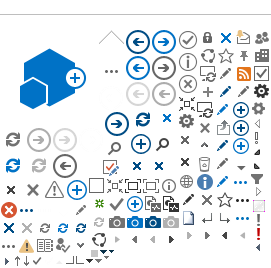Ramadan is an opportunity to stop bad habits that negatively affect our health and adopt healthier and nutritious diets. Fasting relieves and strengthens the digestive system while increasing its efficiency, and helps adjust triglyceride levels in the blood. Despite this, many have reversed the rule. With the abundance and easy preparation of food, people often break their fast with lavish feasts rich in a variety of dishes, sweets and fried food, leading to an increase in triglycerides and cholesterol, and perhaps diabetes and weight gain which is the opposite of what the fasting person is trying to achieve.
What is required is a balanced and nutritional meal in terms of quantity and quality, rather than being deprived of food and sweets.
The ideal meal planMain rules:- Break your fast with dates.
- Incorporate soups and salads into your food plan.
- Stay away from fried and fatty food as much as possible and substitute frying with baking or grilling.
- Avoid eating sweets every day during Ramadan and restrict them to special occasions (such as dining out or inviting guests to the Iftar meal).
Iftar meal: - First: Eat three dates with one cup of water.
- Second: Eat soup every day. Avoid creamy and fatty soups and replace them with vegetables, lentils, barley, or chicken soups (cream free).
- Third: Appetizers
Eating appetizers after soup will prepare your stomach to begin the digestion process. Therefore, it is recommended to choose appetizers that are rich in vegetables such as fatoush, green salad and taboule sprinkled with a hint of lemon or vinegar without any added salt.
- Fourth: The main dish
It is preferable that Ramadan tables feature one main dish, as food variety and indulgence generally lead to overeating. Food for the Iftar meal should include carbohydrates such as rice, pasta, bread, etc. and protein found in red meat, chicken or fish.
Here are a few examples: Thareed, meat kabsa, chicken, pasta, and harissa.
Late night snack (Ghabgha):Food served at this meal is a balancing act and will depend on the person’s food intake at the other three meals. For instance, if the person had a heavy Iftar, the Ghabgha meal should be light, contrary to the practice of indulging in sumptuous meals, late at night, with main dishes, fried foods, and sweets, then going to bed directly after eating which can lead to health problems.
For example:
- You can eat foods containing carbohydrates (whole wheat bread, rice, pasta, etc.) and change the protein source such as opting for a vegetable protein (fava beans, chick peas, lentils, etc.)
- Include a salad to ensure that the body’s requirements for fiber, vitamins, and minerals are met.
- Avoid serving fried foods and sweets at this meal and remember to drink sufficient amounts of water to ensure an adequate supply of the body’s requirements for liquids.
Suhoor meal: The best time to eat Suhoor is half an hour before the Adhan. You can break your fast with something light such as:
- Whole grain bread with labneh plus a piece of fruit
- Cereals with fresh milk plus dried fruits
Stay away from sweets that can increase your feeling of hunger a few hours after you start your fast. Also, avoid salty foods because they trigger thirst.
Prepared by: Health Education Programs
Ministry of Public Health
